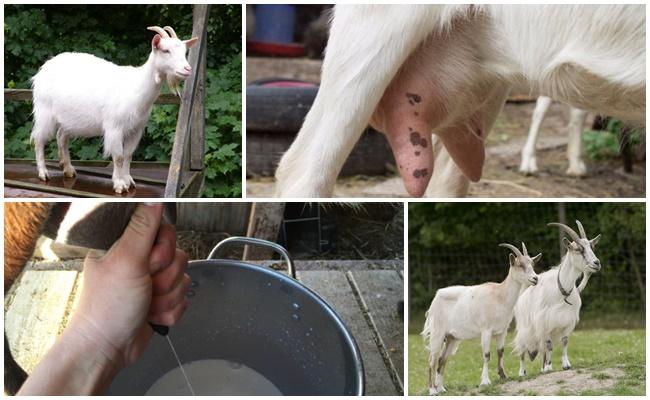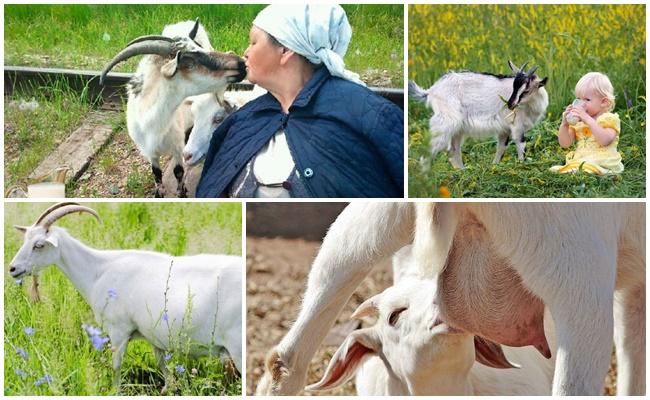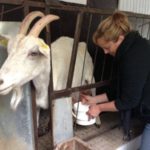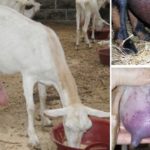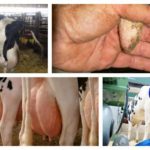Raising goats can bring not only joy to the novice livestock breeder, but also difficult situations. It happens that after giving birth or during lactation, a goat suddenly loses its appetite and does not produce as much milk as it should. There may be several reasons for this pathological condition of an animal. Let's look at what to do if the goat doesn't eat well and gives little milk.
Main reasons and treatment rules
Loss of appetite and insufficient milk production in a goat can be associated with diseases of the udder, diseases of other organs, or mistakes on the part of the livestock breeder - improper feeding or maintenance.Often several reasons can be combined or one can be a consequence of another.
Udder diseases
Childbirth is stressful for any animal, and the process does not always go without consequences. A common problem that can happen to goats after giving birth is udder swelling. Swelling is not life-threatening for the animal, but the animal still needs help, as swelling can lead to a more serious problem - mastitis. In order for the udder to return to normal as quickly as possible, you need to lubricate it with honey, the drug “Troxevasin”, and wrap it in a heated towel before milking.
If the udder is not soft, but inflamed and hard, it is most likely mastitis. The disease cannot be cured on its own; you can help the goat by giving antibiotics: Streptomycin, Cefazolin, Benzylpenicillin. Do not use ointments and vegetable oils or rub the udder with them.
Mastitis can be caused by improper milking, ingestion of microorganisms, poor hygiene, or keeping the animal in a cold or dirty environment. Late starting of a goat before giving birth often leads to mastitis. In this case, the animal’s body does not have time to recover and prepare for the next lactation.
Improper feeding - a high content of juicy root vegetables, fresh grass, and concentrates in the goat's diet, which are given to stimulate milk production, can also cause mastitis. By souring in the rumen, food causes the death of microflora, toxins irritate the udder parenchyma. The milk stagnates in it and inflammation occurs. To avoid this, you should not give the goat a lot of succulent food and increase the share of rough food. Give only dried grass.
Other diseases
Endometritis is an inflammation of the uterus that develops as a result of retained placenta.The cause of the disease is improper feeding of the goat during pregnancy, especially in the last months. The body of a ruminant animal requires fiber and carotene, which it can obtain from feed. And since gestation usually occurs in winter and early spring, at this time there are not enough nutrients in food.
To replenish the goat's body with dietary fiber and carotene, the animal needs to be given more hay, branches with leaves, concentrates, and reduce the amount of root vegetables and silage.
Maternity paresis or milk fever. This disease develops during the first days after birth, the cause is a severe calcium deficiency. This element is spent on milk production and is taken in large quantities from bone tissue, so goats with high milk yields most often suffer from paresis. Symptoms: the goat refuses to feed, a drop in temperature, and an unsteady gait.
Treatment should be carried out by a veterinarian. Due to the drop in temperature, the animal is freezing, and it needs to be warmed up - rubbed with hay strands and covered with a blanket. An unhealthy diet leads to another disease - atony of the proventriculus (cessation of their activity). Symptoms: lack of chewing gum and peristalsis, development of tympany. The goat needs to be treated with ruminator drugs, for example, hellebore tincture or "Tympanon", and a starvation diet, given only hay and water.
Symptoms: refusal to eat, rapid weight loss. Ketosis mainly affects multiparous animals with high milk yields. Treatment must be followed by a diet in which the amount of protein corresponds to the energy capacity of the food.At the beginning of treatment, milk yield will be small, all the milk must be given to the kid.
Improper feeding
Goats that give birth for the first time have little milk. This is normal for the first 1-2 days after birth. To increase milk production, the goat can be given a liquid mixture of bran, water and a small amount of sugar.
A goat may produce little milk after a sudden change from one food to another, with poor feeding, lack of protein, vitamins and minerals, or feeding with low-quality food. If she milked well at first, but then stopped giving milk in the same volume, she needs to be fed with sunflower cake and other nutritious food - concentrates, good hay, dairy products.
Violation of containment conditions
Any pet should be kept in a warm, dry, spacious and bright room. In a cold, dirty, drafty and dark goat shed, goats get sick, and even if they remain healthy, they do not feel comfortable. Due to poor maintenance, milk yield decreases.
If you put the goat house in order, clean it, insulate it; Turn on the lights in the evening and in the morning, change the bedding on time, take the goat outside for a walk every day, the animal’s well-being will improve and milk yield will increase.
Udder care during lactation is important. Before milking, you need to wash it with warm water, and then massage it and smear the nipples with a special udder cream. It is better to keep kids separately from their mother and bring them to her only for feeding.
When is a decrease in milk yield considered normal?
The amount of milk in a goat gradually increases until 3-4 months after birth. Then it begins to gradually decrease. This is considered normal, the milk decreases so that the goat can prepare for the next lambing.
If goat after lambing does not eat and gives little milk, such situations are often dangerous for her health and life. If such symptoms appear, you need to find out their cause and begin treating the animal.

